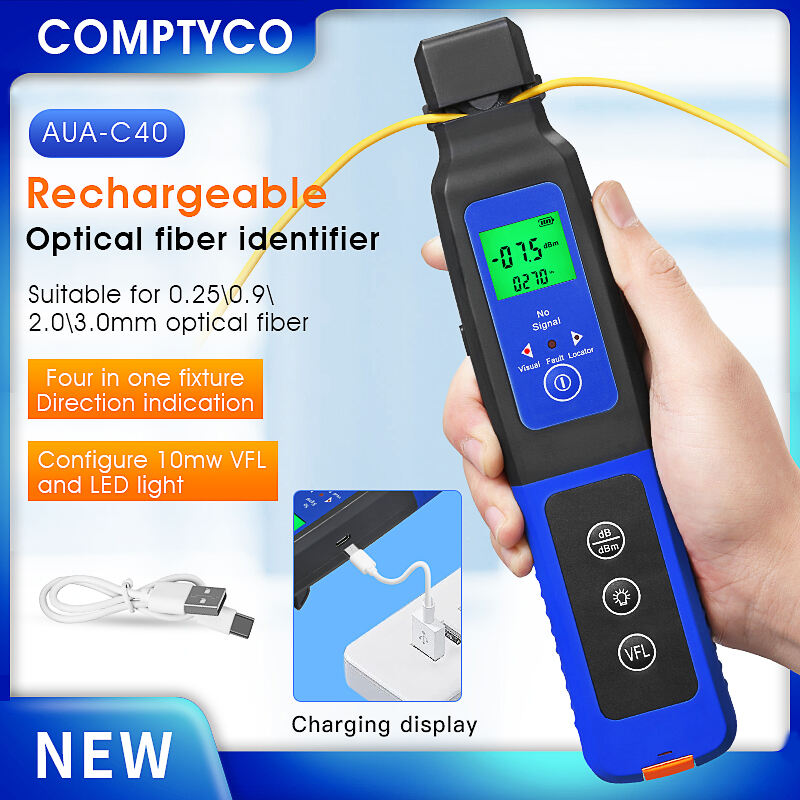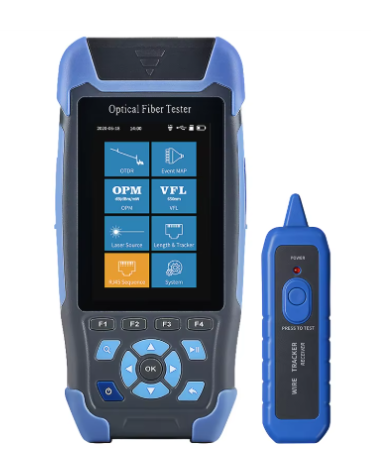फाइबर ऑप्टिक कनेक्टरों के प्रदूषण के जोखिमों को समझना
कैसे प्रदूषणकारी पदार्थ संकेत प्रसारण को प्रभावित करते हैं
फाइबर ऑप्टिक कनेक्टर्स पर गंदगी वास्तव में सिग्नल की गुणवत्ता को खराब कर सकती है और गंभीर संचरण समस्याओं का कारण बन सकती है। दूरसंचार क्षेत्र में शोध से पता चला है कि धूल के कण और तेल के अवशेष जैसे पदार्थ वास्तव में कुछ मामलों में 90% तक संकेतों को कम कर सकते हैं। ये ऑप्टिकल फाइबर प्रकाश को भेजकर काम करते हैं, इसलिए उस पथ को अवरुद्ध करने वाली कोई भी चीज संकेत को कमजोर कर देती है जो नेटवर्क के माध्यम से चल रहे डेटा को बाधित करती है। फाइबर सिस्टम से सर्वोत्तम संभव प्रदर्शन प्राप्त करने की कोशिश करते समय, यह जानना बहुत महत्वपूर्ण है कि धूल के छोटे टुकड़े, उंगलियों से धब्बे और विभिन्न तेल उन केबलों के अंदर प्रकाश की यात्रा के तरीके में कैसे हस्तक्षेप करते हैं। कुछ दिलचस्प भी होता है इन प्रदूषकों के प्रभाव में परिवर्तन होता है प्रकाश की तरंग दैर्ध्य के आधार पर जो फाइबर से गुजर रहा है। इस भिन्नता के कारण, तकनीशियनों को विशिष्ट अनुप्रयोग के आधार पर विभिन्न सफाई दृष्टिकोणों के बारे में सावधानीपूर्वक सोचने की आवश्यकता है, यह सुनिश्चित करना कि बहुत अधिक हस्तक्षेप नहीं है और सही संचालन के लिए संकेत को पर्याप्त स्पष्ट रखें।
फाइबर के अंत के संपर्क में आने के सामान्य स्रोत
यह जानना कि फाइबर के अंत में चेहरे की प्रदूषण कहाँ से आती है, बहुत मायने रखता है अगर हम चाहते हैं कि हमारे फाइबर ऑप्टिक सिस्टम समय के साथ अच्छी तरह से काम करें। आसपास से धूल, उपकरण को संभालने पर बचे हुए अवशेष और खराब भंडारण आदतें सभी बड़ी समस्याएं हैं जो इन कनेक्टर्स पर गंदगी डालती हैं। और मानव त्रुटियों के बारे में मत भूलना बहुत से लोग बिना सोचे-समझे कनेक्टर पकड़ते हैं या वास्तविक छोरों को छूते हैं, जो उन्हें तेजी से पहनता है और चीजें वहां अटक जाती हैं। अच्छी ट्रेनिंग वास्तव में इस तरह की त्रुटियों को कम करने में मदद करती है ताकि फाइबर ऑप्टिक्स के साथ काम करने वाला कोई भी व्यक्ति जानता हो कि चीजों को ठीक से कैसे संभालना है। नई प्रणालियों को स्थापित करते समय या नियमित जांच करते समय सब कुछ साफ और साफ रखना प्रदूषण की समस्याओं को रोकने में बहुत बड़ा अंतर करता है। जब टीम नियमित रूप से सफाई की नियमित प्रक्रियाओं का पालन करती है, तो वे अपने फाइबर ऑप्टिक सेटअप से बेहतर परिणाम देखते हैं, कम सिग्नल ड्रॉप, और पूरी तरह से सिस्टम विफलता का जोखिम कम करते हैं।
ज़्यादा सफाई क्या है?
आवृत्ति बनाम आवश्यकता: संतुलन बनाना
फाइबर ऑप्टिक कनेक्टर्स के लिए सही सफाई कार्यक्रम प्राप्त करना बहुत मायने रखता है क्योंकि इसे अधिक करना वास्तव में समस्याओं का कारण बन सकता है। कई लोगों का मानना है कि अधिक सफाई बेहतर प्रदर्शन के बराबर है, लेकिन बार-बार सफाई से बहुत अधिक घर्षण इन नाजुक घटकों को नुकसान पहुंचा सकता है। उद्योग के दिशानिर्देश आम तौर पर बहुत कम और बहुत अधिक रखरखाव के बीच की मीठी जगह खोजने की ओर इशारा करते हैं। अनुसंधान से पता चलता है कि कनेक्टर की अखंडता की रक्षा करते हुए सिग्नल के प्रसारण के लिए चीजों को साफ रखने के लिए नियमित सफाई सत्रों के बारे में नहीं है। तकनीशियनों को पहले यह जांचना चाहिए कि क्या कोई वास्तविक दूषित है, किसी मनमाने ढंग से अनुसूची का पालन करने के बजाय। यह समझने में समय लगाना कि वास्तव में कुछ कितना गंदा है, इससे फर्क पड़ता है। यह मध्यवर्ती दृष्टिकोण लगातार संचालन से अनावश्यक तनाव के अधीन किए बिना कनेक्टरों को ठीक से काम करने में मदद करता है।
गलत धारणाएं जो ज़्यादा सफाई करने की ओर ले जाती हैं
कई लोग फाइबर ऑप्टिक कनेक्टरों की सफाई के बारे में भ्रमित हो जाते हैं, अक्सर उन्हें बहुत अधिक साफ करने के लिए समाप्त होता है, जो वास्तव में समस्याओं का कारण बनता है। वहाँ यह आम धारणा है कि अधिक बार सफाई करने का मतलब है बेहतर परिणाम, लेकिन सच कहूं, ओवरबोर्ड करने से केवल चीजें खराब हो जाती हैं। सफाई के कार्य से कनेक्टर समय के साथ खराब हो जाते हैं, जिससे उनका जीवनकाल काफी कम हो जाता है। कभी-कभी लोग साफ करते हैं क्योंकि वे वास्तव में कुछ भी गंदा होने से चिंतित हैं, भले ही उन्हें शायद इतनी चिंता करने की आवश्यकता नहीं है। टीआईए जैसे उद्योग समूहों ने उचित सफाई कार्यक्रमों और तकनीकों के लिए वास्तविक मानक बनाए हैं। जब तकनीशियन अनुमान लगाने के बजाय इन वास्तविक दुनिया के दिशानिर्देशों का पालन करते हैं, तो वे सभी प्रकार की समस्याओं से बचते हैं जो अनावश्यक सफाई से आती हैं जबकि अभी भी सब कुछ ठीक से काम करता है।

इन अंतर्दृष्टि फाइबर ऑप्टिक्स क्षेत्र में पेशेवरों को एक उचित रखरखाव दिनचर्या प्राप्त करने में मदद कर सकते हैं जो उनके कनेक्टरों की शारीरिक भलाई के साथ संकेत स्पष्टता की जरूरतों को संतुलित करता है।
फाइबर ऑप्टिक कनेक्टरों की अति-सफाई से होने वाले भौतिक जोखिम
सफाई उपकरणों से घर्षण
जब लोग सफाई उपकरण ठीक से नहीं संभालते हैं, तो वे अक्सर फाइबर ऑप्टिक कनेक्टरों को नुकसान पहुंचाते हैं जो समय के साथ उनके कामकाज को प्रभावित करते हैं। सफाई के दौरान घर्षण की क्रिया उन छोटे-छोटे फेरुल सतहों को पहनती है जहाँ प्रकाश वास्तव में यात्रा करता है, कुछ बहुत महत्वपूर्ण अगर संकेत मजबूत रहने की जरूरत है। इस क्षेत्र में शोध से पता चलता है कि बहुत अधिक स्क्रबिंग, विशेष रूप से जब असभ्य सामग्री शामिल होती है, तो बार-बार उपयोग के बाद ध्यान देने योग्य गिरावट होती है, जिससे कनेक्शन कमजोर हो जाते हैं। हमने ऐसे मामले देखे हैं जहाँ कोई किसी भी कपड़े को हाथ में पकड़ लेता है या सफाई करते समय बहुत अधिक दबाव लगाता है, केवल बाद में यह पता लगाने के लिए कि उनका नेटवर्क गिरा संकेतों या पूर्ण विफलता बिंदुओं के साथ कार्य करना शुरू कर देता है। उचित सफाई सामग्री चुनना यहाँ बहुत महत्वपूर्ण है, जैसा कि यह समझना भी कि बिना नुकसान पहुंचाए उचित कार्य को बनाए रखने के लिए ठीक से कैसे कोमल उपयोग किया जाना चाहिए।
सूक्ष्म-चिराटन का गठन और संकेत हानि
बहुत अधिक सफाई करने से सतहों पर सूक्ष्म खरोंच जैसी समस्याएं पैदा होती हैं। ये छोटे-छोटे धब्बे पहली नज़र में खराब नहीं लग सकते हैं लेकिन वे वास्तव में उनके माध्यम से गुजरने वाले संकेतों को गड़बड़ करते हैं। प्रतिबिंब तब और खराब हो जाता है जब चारों ओर बहुत सारे छोटे खरोंच होते हैं, जिससे पूरा ट्रांसमिशन कमजोर हो जाता है। अध्ययनों से पता चला है कि अधिक सूक्ष्म खरोंच वाले नेटवर्क खराब सिग्नल गुणवत्ता दिखाते हैं। अभ्यास में क्या होता है? उच्च त्रुटि दर और धीमी गति से कनेक्शन बोर्ड भर में। अधिकांश तकनीशियन किसी को भी जो सुनता है, यह बताएगा कि यहां कोमलता से काम करना बहुत महत्वपूर्ण है। इन कनेक्टर्स की नियमित जांच इन समस्याओं को जल्दी से पकड़ने में बहुत फर्क करती है इससे पहले कि वे लाइन में अधिक सिरदर्द में बदल जाएं।
फेरुल सामग्री का अपघटन
बहुत अधिक सफाई वास्तव में फाइबर ऑप्टिक कनेक्टर के अंदर की फेर्रुल सामग्री को नुकसान पहुंचाता है, जो कि कुल मिलाकर उनकी स्थायित्व को प्रभावित करता है। कुछ सामग्री दूसरों की तुलना में आक्रामक सफाई को अच्छी तरह से नहीं संभालती हैं। हमने बहुत सारे ऐसे उदाहरण देखे हैं जहाँ लोगों ने अपने कनेक्टरों को बहुत बार साफ किया और अंततः उन्हें अपेक्षा से बहुत पहले बदल दिया क्योंकि सतहें पहनी हुई थीं। यहाँ मुख्य बात उन ferrules ठीक से बनाए रखने के लिए है। अधिकांश तकनीशियन आपको साफ करने के लिए नहीं कहेंगे जब तक कि निश्चित रूप से कुछ गलत नहीं है। जब सफाई जरूरी हो जाए, तो उपकरण और समाधान के लिए निर्माता की सिफारिशों का सख्ती से पालन करें। इन घटकों को संरक्षित करने के लिए थोड़ा बहुत काम आता है।
रासायनिक और पर्यावरणीय जोखिम
सफाई सॉल्वैंट्स से तरल अवशेष का निर्माण
जब सफाई सॉल्वैंट्स को फाइबर ऑप्टिक कनेक्टर्स पर ठीक से लागू नहीं किया जाता है, तो वे तरल अवशेष पीछे छोड़ देते हैं जो समय के साथ बढ़ता है। यह अवशेष ऑप्टिकल पथ को खराब करता है और अंततः नेटवर्क में सिग्नल की गुणवत्ता को प्रभावित करता है। कई अलग अलग उद्योगों ने इस प्रकार के निर्माण के साथ समस्याओं की सूचना दी है, और यह वास्तव में मुख्य कारणों में से एक है कि नेटवर्क प्रदर्शन समस्याओं का अनुभव क्यों करते हैं। हाल ही में उद्योग की रिपोर्टों के अनुसार, कुछ नेटवर्क में सिग्नल में गड़बड़ी होती है जो कि अवशिष्ट विलायक पदार्थ के कारण होती है जो कि फाइबर के माध्यम से प्रकाश की यात्रा को बदल देता है। समाधान क्या है? फाइबर ऑप्टिक्स के लिए विशेष रूप से बनाए गए वैकल्पिक सफाई उत्पादों पर स्विच करना एक बड़ा अंतर बनाता है। ऐसे उत्पादों की तलाश करें जो पूरी तरह से साफ हों लेकिन पीछे कोई निशान न छोड़ें जो नाजुक फाइबर संरचना को नुकसान पहुंचा सकें या उन महत्वपूर्ण ऑप्टिकल संकेतों को बाधित करें जिन पर हम बहुत निर्भर हैं।
स्थिर आवेश संचय और कण आकर्षण
फाइबर ऑप्टिक कनेक्टरों की सफाई करते समय स्थैतिक बिजली की उपेक्षा करने से वास्तव में चीजें बदतर होती हैं क्योंकि यह अधिक प्रदूषकों को खींचती है। अधिकांश मानक सफाई प्रक्रियाएं स्पष्ट गंदगी से निपटती हैं लेकिन इन नाजुक कनेक्टर सतहों पर स्थिर शुल्क पैदा करती हैं। अब आगे क्या होगा? हवा में फैली धूल इस स्थिरता के प्रति आकर्षित होती है, ठीक वहीं चिपके रहती है जहाँ उसे नहीं होना चाहिए और पूरी स्थिति को पहले से भी बदतर बनाती है। शोध से पता चलता है कि स्थिर शुल्क वास्तव में गड़बड़ कैसे अच्छी तरह से सफाई काम करता है और समय के साथ नेटवर्क विश्वसनीयता को प्रभावित करता है। बुद्धिमान तकनीशियन यह जानते हैं और शुरुआत से ही समस्याओं को रोकने के लिए कदम उठाते हैं। एंटी-स्टेटिक पोंछे का उपयोग करना और यह सुनिश्चित करना कि रखरखाव के दौरान उपकरण ठीक से ग्राउंड हो जाता है, उन कष्टप्रद स्थैतिक चार्ज को रोकने के लिए बहुत दूर जाता है। जब सही तरीके से किया जाता है, तो ये सरल सावधानीएं कनेक्शन को साफ रखने और सिस्टम को अनावश्यक डाउनटाइम के बिना सुचारू रूप से चलाने में बहुत फर्क डालती हैं।
अति सफाई से बचने में निरीक्षण की भूमिका
ग्रेडिंग के लिए आईईसी 61300-3-35 मानकों का कार्यान्वयन
आईईसी 61300-3-35 मानकों का पालन करने से फाइबर ऑप्टिक कनेक्टरों को अपना सर्वश्रेष्ठ काम करने में मदद मिलती है। मानक वास्तव में साफ कनेक्शन की जाँच के बारे में स्पष्ट नियम प्रदान करते हैं दोनों सफाई प्रक्रियाओं से पहले और बाद में, इसलिए रखरखाव हर बार सही किया जाता है। इन मानकों को मूल्यवान बनाने वाली बात यह है कि ये स्वच्छता के मापने योग्य स्तर पैदा करते हैं। तब तकनीशियन यह पता लगा सकते हैं कि कनेक्टर को अतिरिक्त सफाई की आवश्यकता कब नहीं है, जिससे सफाई प्रयासों में ओवरबोर्ड होने से होने वाले आकस्मिक क्षति को रोका जा सकता है। जब टीमें इन दिशानिर्देशों के अनुसार अपने रखरखाव कार्यक्रम का हिस्सा नियमित रूप से जांच करती हैं, तो वे सिग्नल अखंडता को बनाए रखते हैं और यह सुनिश्चित करते हैं कि उपकरण लंबे समय तक चले। इन निरीक्षण प्रक्रियाओं को मानक रखरखाव कार्य में शामिल करने से सिस्टम का समग्र प्रदर्शन बढ़ता है और उन निराशाजनक स्थितियों को कम करता है जहां कोई कुछ ठीक करता है जो पहले स्थान पर खराब नहीं था।
उद्देश्य विश्लेषण के लिए स्वचालित निरीक्षण उपकरण
स्वचालित निरीक्षण उपकरण में नवीनतम विकास खेल को बदल रहे हैं जब यह जांचने की बात आती है कि फाइबर ऑप्टिक कनेक्टर पर्याप्त स्वच्छ हैं या नहीं। ये नए तकनीकी समाधान निरीक्षण के दौरान मानव निर्णय के साथ आने वाले पूर्वाग्रह के बिना बहुत अधिक सटीक आकलन प्रदान करते हैं। उदाहरण के लिए स्वचालित फाइबर निरीक्षण माइक्रोस्कोप लें, वे कनेक्शन को जल्दी और सटीक रूप से जांचना संभव बनाते हैं। विभिन्न उद्योगों की कई कंपनियों ने इन उपकरणों को अपनाना शुरू कर दिया है क्योंकि वे पारंपरिक तरीकों से बेहतर काम करते हैं। जब ये सिस्टम कनेक्टर्स पर गंदगी या मलबे का पता लगाते हैं, तो वे अनावश्यक सफाई प्रयासों को रोकते हैं जो वास्तव में समय के साथ नाजुक भागों को संरक्षित करने में मदद करता है। मुख्य बात यह है कि स्वचालित निरीक्षणों पर स्विच करने से मरम्मत के खर्च में कमी आती है और उन महंगे कनेक्टरों को बदलने से पहले लंबे समय तक चलने देता है। किसी के लिए भी जो फाइबर ऑप्टिक नेटवर्क चलाता है, इस तरह की तकनीक अपने आप को बहुत जल्दी भुगतान करती है जबकि सब कुछ सुचारू रूप से चल रहा है।
सुरक्षित फाइबर ऑप्टिक रखरखाव के लिए सर्वोत्तम प्रथाएं
गैर-घर्षण सफाई उपकरण चुनना
सही सफाई उपकरण चुनने से फाइबर ऑप्टिक्स को साफ रखने और क्षति से बचाने में बहुत फर्क पड़ता है। गैर-घर्षण विकल्प सबसे अच्छा काम करते हैं क्योंकि वे संवेदनशील घटकों को खरोंचने के बिना गंदगी और गंदगी को पोंछते हैं। अधिकांश तकनीशियनों ने पित्त मुक्त पोंछे, स्वाब और विशेष रूप से क्लिक-टाइप क्लीनरों पर शपथ ली क्योंकि वे काम ठीक से करते हैं। उदाहरण के लिए क्लिक टाइप क्लीनर लें वे वास्तव में संकुचित क्षेत्रों में चमकते हैं जहां अन्य उपकरण बस नहीं पहुंचेंगे, जो बताता है कि इतने सारे क्षेत्र के श्रमिक उन्हें हाथ में क्यों रखते हैं। जो लोग फाइबर कनेक्शन के साथ काम करते हैं वे नियमित रूप से बात करते हैं कि कैसे ये उपकरण लाइन में नई समस्याएं पैदा किए बिना कनेक्टर की सफाई बनाए रखते हैं।
सूखी सफाई और गीली सफाईः प्रत्येक विधि का उपयोग कब करें
सूखी और गीली सफाई के बीच का विकल्प वास्तव में इस बात पर निर्भर करता है कि हम किस तरह की गड़बड़ के साथ काम कर रहे हैं। हल्के सामान के लिए, ज्यादातर लोग पहले ड्राई क्लीनिंग के तरीकों का उपयोग करते हैं। वे उन पित्त मुक्त पोंछे और पोंछे को पोंछने के लिए पोंछते हैं। जब कहीं गंदगी फंस जाती है, तो उचित सॉल्वैंट्स के साथ अच्छी पुरानी गीली सफाई से बेहतर कुछ नहीं होता। हम अक्सर 99% आइसोप्रोपाइल अल्कोहल तक पहुंचते हैं जब उन कठिन स्थानों का सामना करते हैं। अनुभव से पता चलता है कि ड्राई क्लीनिंग से स्टेटिक बिजली उत्पन्न होती है जो बाद में और गंदगी खींचती है। गीली सफाई भी बहुत अच्छी है लेकिन कुछ देखभाल की जरूरत है ताकि हम संवेदनशील सतहों को खरोंच न करें। अधिकांश रखरखाव पुस्तिकाएं तकनीशियनों को गीले तरीकों पर स्विच करने के लिए कहेंगी जब भी कनेक्टर बहुत गंदे दिखते हैं। लेकिन अगर यह केवल थोड़ी धूल या कुछ मामूली है, तो ड्राई क्लीनिंग बिना किसी परेशानी के काम कर देती है। दोनों कारकों को एक साथ देखने से तकनीशियनों को बेहतर निर्णय लेने में मदद मिलती है कि वे किस उपकरण पर काम कर रहे हैं और वास्तव में प्रदूषण कितना बुरा है।
डेटा-संचालित सफाई अंतराल स्थापित करना
जब कंपनियां डेटा एनालिटिक्स का उपयोग यह पता लगाने के लिए करती हैं कि सफाई की वास्तव में आवश्यकता कब है, तो वे रखरखाव कार्य को मशीनों के वास्तविक उपयोग के साथ मेल खा सकते हैं, जिससे सफाई के समय में कमी आती है। ऐसे कई व्यवसाय जिन्होंने इन स्मार्ट सफाई विधियों पर स्विच किया है, वे सभी क्षेत्रों में बेहतर परिणाम देखते हैं। वे कम डाउनटाइम देखते हैं और उनके उपकरण को बदलने से पहले अधिक समय तक चलने की प्रवृत्ति होती है। सेंसर यह सब संभव भी कर रहे हैं। ये उपकरण यह पता लगाते हैं कि विभिन्न भाग कितनी बार गंदे हो जाते हैं और स्वचालित रूप से सफाई के कार्यक्रम निर्धारित करते हैं। हम एक ऐसी प्रणाली के साथ समाप्त होते हैं जहाँ तकनीकी कर्मचारी अब रखरखाव के लिए केवल निश्चित कैलेंडर का पालन नहीं करते हैं। इसके बजाय, वे सेंसर द्वारा मापा गया वास्तविक गंदगी के स्तर का जवाब देते हैं। इस तरह की सफाई कार्य बहुत प्रभावी हो जाते हैं और साथ ही प्रत्येक सुविधा के लिए जो भी विशिष्ट आवश्यकताएं होती हैं, उन्हें पूरा करते हुए चीजें सुचारू रूप से चलती रहती हैं।
सामान्य प्रश्न अनुभाग
फाइबर ऑप्टिक कनेक्टर पर प्रदूषकों का क्या प्रभाव पड़ता है?
धूल और तेल जैसे प्रदूषक सिग्नल के महत्वपूर्ण नुकसान का कारण बन सकते हैं, डेटा प्रवाह को बाधित कर सकते हैं और सिस्टम की दक्षता को प्रभावित कर सकते हैं।
फाइबर ऑप्टिक कनेक्टरों को कितनी बार साफ किया जाना चाहिए?
सफाई की आवृत्ति को अति सफाई के जोखिम के खिलाफ आवश्यकता का संतुलन बनाना चाहिए; सफाई से पहले संदूषण के स्तर का आकलन करना महत्वपूर्ण है।
क्या अति सफाई से फाइबर ऑप्टिक कनेक्टर पर नकारात्मक प्रभाव पड़ सकता है?
हां, अत्यधिक सफाई से घर्षण, सूक्ष्म खरोंच और कनेक्टर सामग्री के क्षरण का कारण बन सकता है, जिससे उनका प्रदर्शन प्रभावित होता है।
फाइबर ऑप्टिक कनेक्टरों की सफाई के लिए किन औजारों का प्रयोग करना चाहिए?
संवेदनशील घटकों को नुकसान से बचने के लिए गैर-घर्षणकारी सफाई उपकरण जैसे कि फट-मुक्त पोंछे, स्वैब और क्लिक-टाइप क्लीनर का उपयोग करें।







